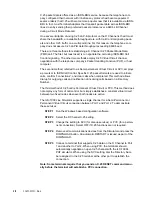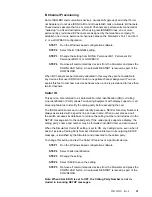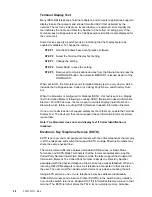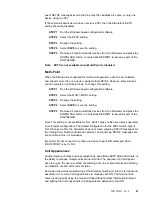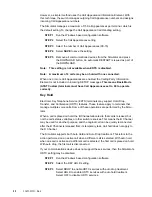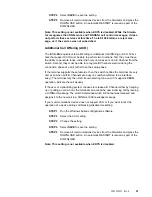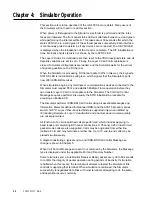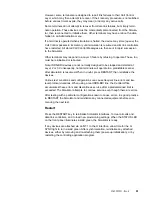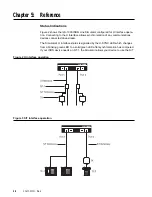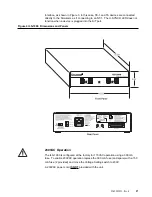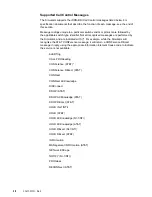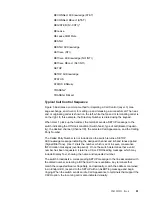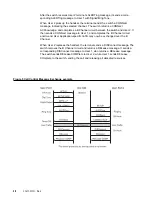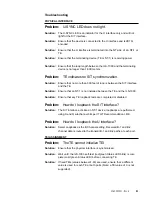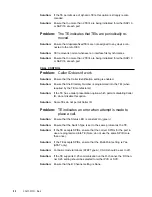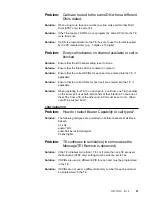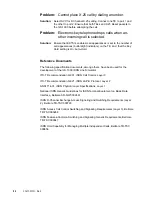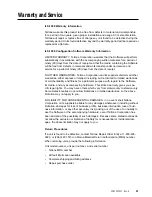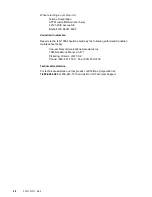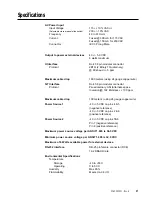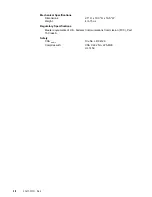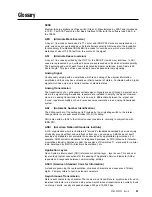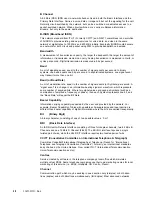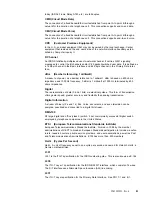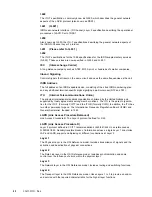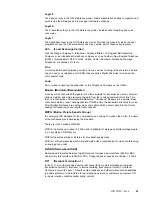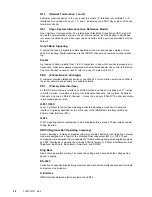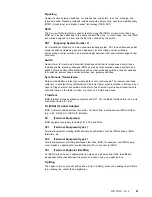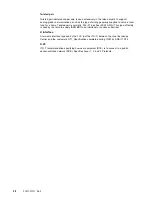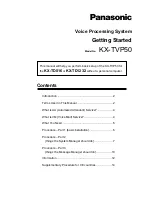
32
40-400-00001, Rev. A
Solution:
If the TE permits use of dynamic TEIs, this option is strongly recom-
mended.
Solution:
Ensure that no more than 2 TEI's are being initialized for either SAPI 0
or SAPI 16 at each port.
Problem: The TE indicates that TEIs are periodically re-
moved.
Solution:
Ensure that duplicate fixed TEIs are not assigned to any device con-
nected to the ILS-1000.
Solution:
TEI removal is normal whenever an interface first synchronizes.
Solution:
Ensure that no more than 2 TEI's are being initialized for either SAPI 0
or SAPI 16 at each port.
CALL CONTROL
Problem: Caller ID doesn’t work.
Solution:
Ensure that the Caller Identification setting is enabled.
Solution:
Ensure that the Directory Number is programmed into the TEI (when
required by the TE manufacturer.)
Solution:
If the TE has a caller presentation option which permits disabling Caller
ID, do not disable this option.
Solution:
Some TEs do not permit Caller ID.
Problem: TE indicates an error when attempt is made to
place a call.
Solution:
Ensure that the Status LED is constant On (green.)
Solution:
Ensure that the Switch Type is set to the same protocol as the TE.
Solution:
If the TE accepts SPIDs, ensure that the correct SPIDs for the port in
use are programmed into TE (Note: do not use the same SPID more
than once).
Solution:
If the TE accepts SPIDs, ensure that the Multi-Point setting is Yes.
(AT&T only)
Solution:
For basic mode terminals (AT&T Type A), CACH should be set to off.
Solution:
If the TE supports X.25 communication on the D-channel, the D Chan-
nel X.25 setting should be selected for either PVC or SVC.
Solution:
Ensure that the B Channel setting is None.

